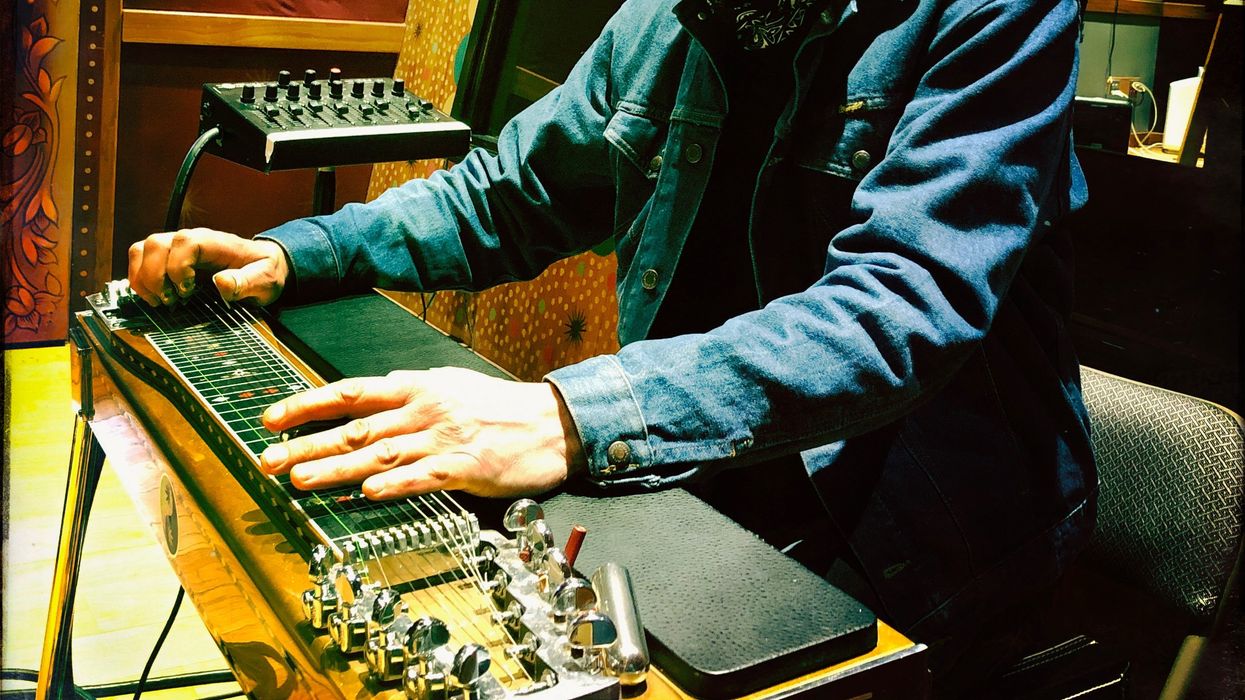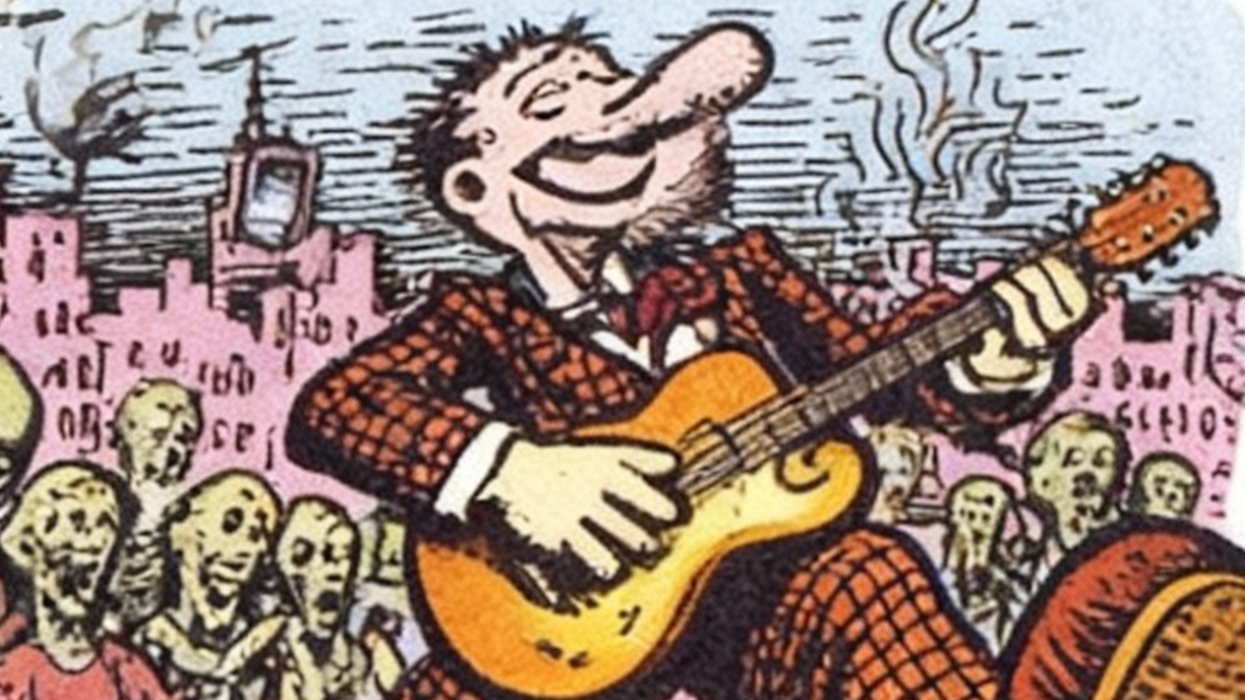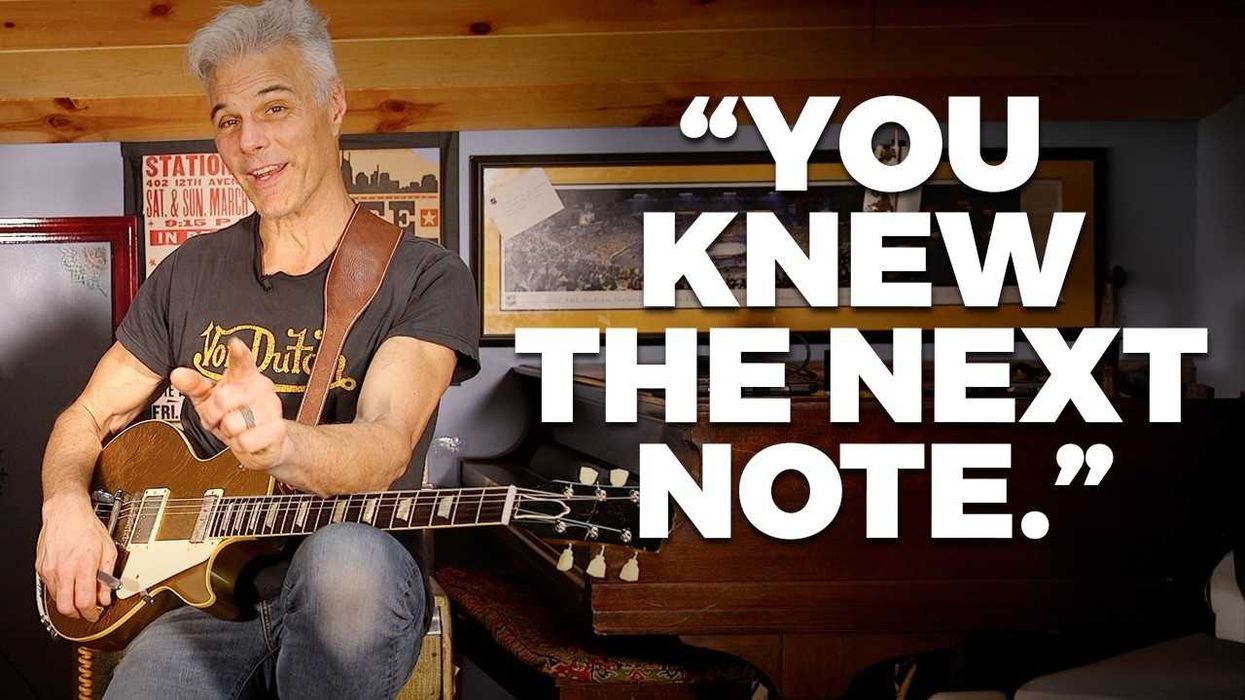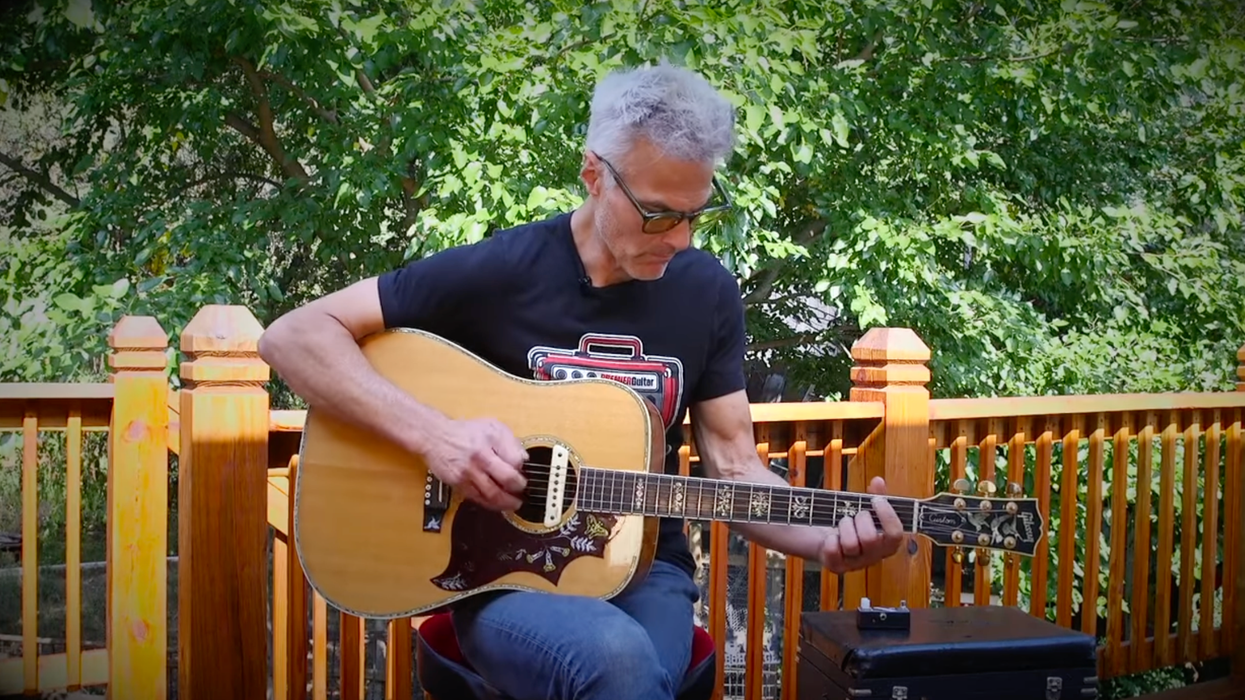Bruce Bouton is one of those Nashville Cats who does it all—he’s a hit songwriter, producer, and an incredible musician. While in his 20s, his playing on Ricky Skaggs’ albums defined new-traditional pedal steel. Bouton became a first-call session player, recording on tons of albums, including most of Garth Brooks’ work, which led to his induction into the Musicians Hall of Fame. Bruce called me a while ago after he had watched Tom Bukovac’s Rig Rundown. We were talking about how great a musician Buk is, and Bruce summed it up: “Success in the studio, or even live for that matter, all comes down to three things—tuning, tone, and taste.” Let’s explore:
Tuning is not a subjective or abstract concept. You’re in tune or out. That being said, no guitarist is ever really in tune. Western music’s 12-tone scale takes an octave and divides it into 12 equal parts, with identical intervals between each half-step. But the system generates discrepancies that are too much to unpack here…. (Pythagorean mathematics, B# is not the same as C, and other things I don’t understand.)
In short, the guitar is an exercise in compromise. Fresh strings, bridge intonated, neck adjusted, climate steady at 72, and still your perfectly tuned guitar will not be in tune with itself throughout the neck. Add another guitar, bass, and piano to the mix, and it’s going to be all over the place. The only music that can be perfectly in tune is an a capella group or a string section, because they can play the notes in between the notes of our Western scale and naturally blend together in perfect harmony.
I drove myself crazy for years trying to be in tune and eventually learned to compensate for the limitations of the instrument: When recording, tune standard, then make the tweaks to sound in tune for a particular key, or even focus on tuning for the part of the fretboard where you will spend the most time. If you keep your gear in shape and listen, you’ll usually be fine, though never perfect.
Bouton told me about his tuning odyssey. Every time he would play the Opry, which was often, he would ask other players tuning questions until one day, staff steel player, Weldon Myrick, said, “Tune your steel and learn how to play it in tune.” Bout said it was a revelation; he realized intonation came down to listening and adjusting his hands on the fly to compensate for the instrument’s limitations.
“The person wearing Crocs with socks, a fedora, and cargo shorts has gone to great effort to create a look that feels right to them. I envy their self-assurance.”
Players like Jeff Beck play with intonation, bending over or under a note to create tension or a mood. But Beck’s intonation is so great that he can think in quarter tones. How he applies this magic is a matter of taste.
Taste is an individual’s personal, cultural, and aesthetic patterns of choice and preference. Unlike tuning, taste is totally subjective. The person wearing Crocs with socks, a fedora, and cargo shorts has gone to great effort to create a look that feels right to them. I envy their self-assurance. On the other hand, I was around when the mullet (also known as the Kentucky waterfall) was the height of cool hair in the ’90s. Amazingly, after decades of bad press, that redneck aesthetic has gone mainstream again.
The point being, your particular tastes will be valued by those that have similar tastes and disparaged by those with narrow minds and different tastes. It’s about finding your tribe. Buk and Bout have great taste. It’s not just their choice of notes; it’s when they play, when they add space, and how they make the instrument sing. There may be no wrong choices in art, but there are aesthetic choices that are universally moving, and that’s where you want to be in the studio.
Bouton said Lloyd Green is the player that taught him about taste. When Bout asked what he needs to do to become a studio ace, Green said, “Listen to the words.”
Tone: Good tone and taste overlap a bit. The tone we love to hear coming out of our amp may not be the tone that best serves the song. Tone not only needs to fit the mood or vibe, but has to work with the other players’ tones. Bouton told me that when he was recording Ricky Skaggs’ Highway 40 Blues, he was able to add more low end on his amp than he normally could because the track had plenty of space; the mids and highs were covered with Skaggs’ mandolin, Bobby Hicks’ banjo, and Ray Flacke’s Telecaster. Bouton had this beautiful warm tone you don’t often hear from a crying pedal steel, which filled the empty frequencies and rounded out the track. As Nashville tracks grew more layered and cluttered, Bouton had to adapt, cut the low end, and boost the mids to fit in a track and be heard.
Players like Bout and Buk have earned their statuses from a lifetime of listening and learning. Great music feels a bit like magic, or divine inspiration, but in the trenches, it comes down to talented musicians obsessed with tuning, taste, and tone. Then, there’s timing….













![Rig Rundown: Russian Circles’ Mike Sullivan [2025]](https://www.premierguitar.com/media-library/youtube.jpg?id=62303631&width=1245&height=700&quality=70&coordinates=0%2C0%2C0%2C0)




